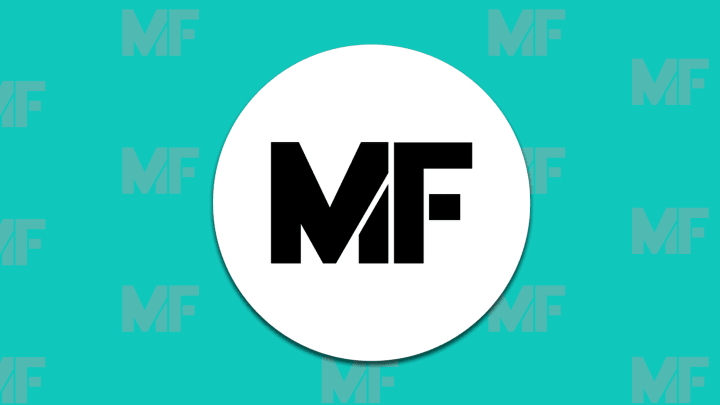8 Weird and Wonderful Musical Instruments

If an object can produce a tone, someone somewhere will make a musical instrument out of it. Some are handed down from antiquity and some are a product of the internet age, but all eight of these are instruments most people are not familiar with.
1. Lithophone
A lithophone is literally a stone instrument. It resembles a xylophone that Fred Flintstone might try to play, in which you strike stones of different sizes to create different tones. The lithophone shown is an exhibit at Questacon Centre in Canberra, Australia, where anyone can play it! However, lithophones can take many forms. The Great Stalacpipe Organ in Luray Caverns is another example of a lithophone. Hear a lithophone performance at YouTube.
2. Udderbot
An udderbot is a musical instrument that consists of a bladder of some sort (often a rubber glove) containing water and a bottomless glass bottle for a mouthpiece. The instrument was developed by Jacob Barton in 2005. He had been playing glass bottles, which give a different pitch according to the level of water in them. Barton figured it would be much easier if one could vary the level of water in one bottle instead of using many bottles, so the udderbot was born. You play the instrument by blowing across the top of the glass bottle and vary the pitch by squeezing the glove to raise or lower the water level. Hear an udderbot performance at YouTube. Instructions are available to make your own udderbot.
3. Kazookeylele
The kazookeylele is a hybrid ukulele, toy piano, and kazoo combination developed by Stuart David Crout, one half of the Scottish ukulele duo Pocket Fox. Hear a kazookeylele performance at YouTube.
4. Glass Armonica
The glass armonica was one of Benjamin Franklin's inventions. The idea was to recreate the sound of music made with wine glasses and other crystallophones without the bother of setting up and tuning many glasses for each performance. The instrument is a rotating axis fitted with glass discs of different sizes that would be touched by wet fingers. Its first performance was in 1762, and was used widely in Europe for a short time. However, as orchestras and the halls they played in grew larger, the glass armonica was abandoned because it wasn't loud enough to be heard at any significant distance. The instrument is also known as a glass harmonica or just an armonica. See a glass armonica performance at YouTube.
5. Chapman Stick
A Chapman stick is an electronic instrument developed by jazz musician Emmett Chapman in the 1970s. It is a stringed fretboard that you tap with either or both hands. The electronics eliminate the need for picking so that the act of fretting actually plays the note. Hear a Chapmen stick performance at YouTube. Image by Flickr user SD Dirk.
6. Berimbau
The berimbau is a musical bow from Brazil that originated in Africa. The bow is four to five feet long, with a resonator made from a gourd at the bottom. The string is tapped with a stick and the tone is controlled by a rock held against the string. Hear the berimbau in this performance on YouTube. Image by Flickr user Alper Çuğun.
7. Jal Tarang
The instrument called Jal Tanrang is sometimes called the musical bowls of India. Similar to a water bottle xylophone, the Jal Tarang is a series of china bowls with varying levels of water which are tapped lightly with a wooden mallet. Hear a Jal Tarang performance at YouTube.
8. Eigenharp
The Eigenharp is promoted as a replacement for a piano, guitar, and woodwind all in one instrument. The Eigenharp has only been in use by the public since 2009. John Lambert began research on the electronic instrument in 2001, with the express goal of creating an instrument that would be more expressive than conventional electronics, and more versatile than the array of instruments that musicians have to haul to live performances. The Eigenharp is close to a classic instrument in that the keys respond to pressure and velocity and the breath pipe can also be used to control the sound. It also has the advantages of electronic instruments in that there are controllers that add effects and drums and a sequencer that can be programmed for accompaniment. There are three models available with different levels of features, priced accordingly. Hear an Eigenharp trio at YouTube.
Your favorite odd instrument not found here might be found in the posts 8 Strange and Different Musical Instruments, Mother Nature's Music, You play a what? or On Music: 5 Peculiar Instruments.